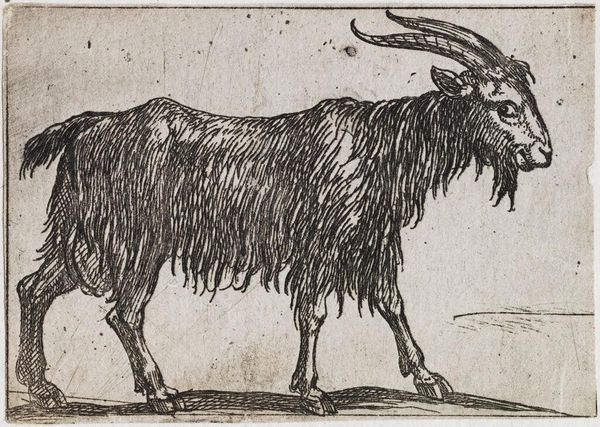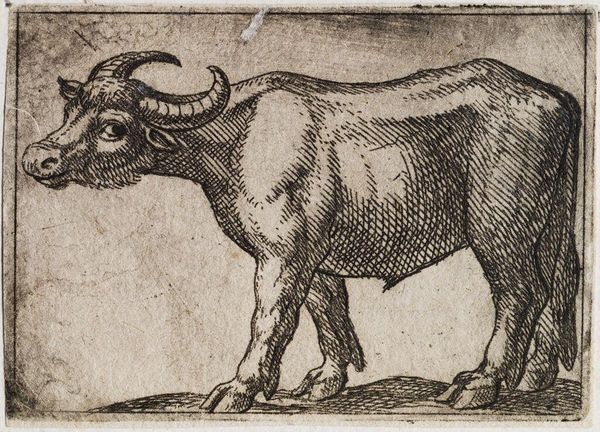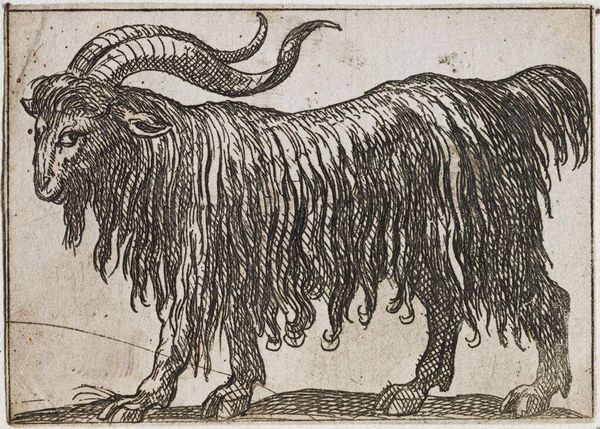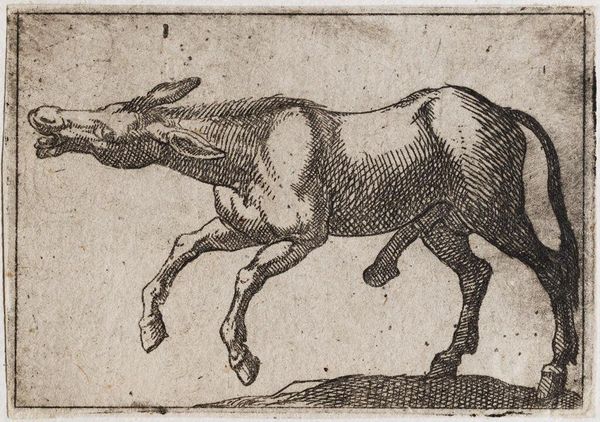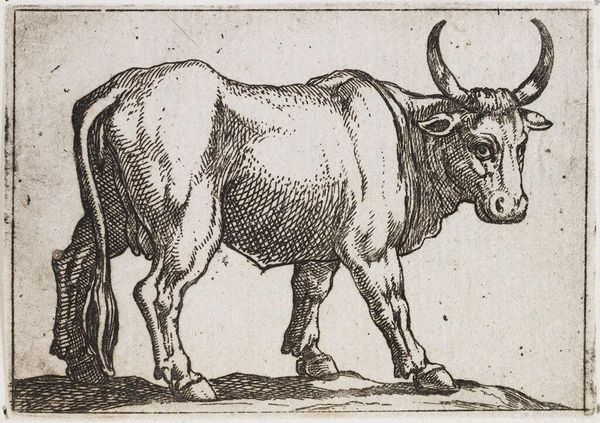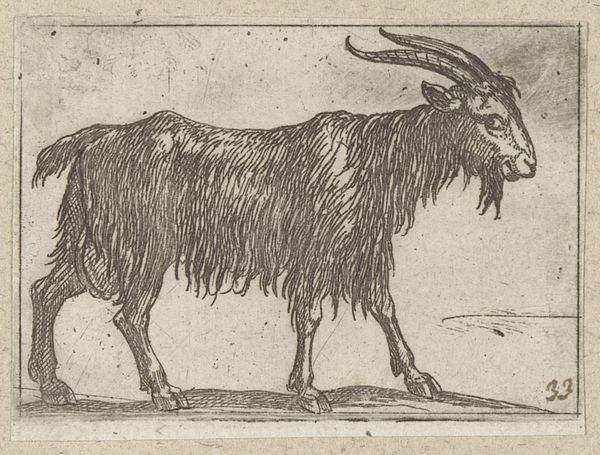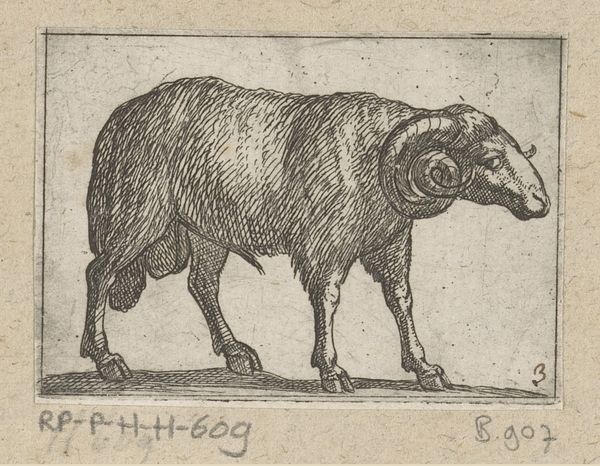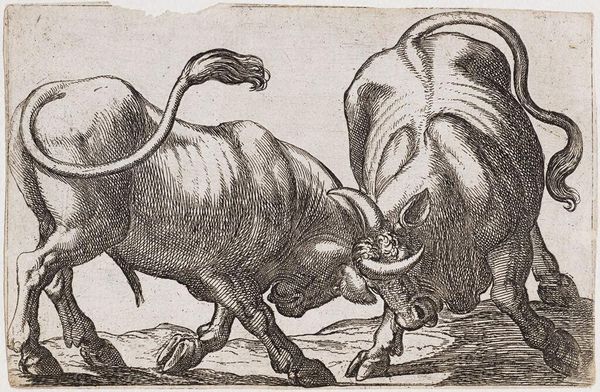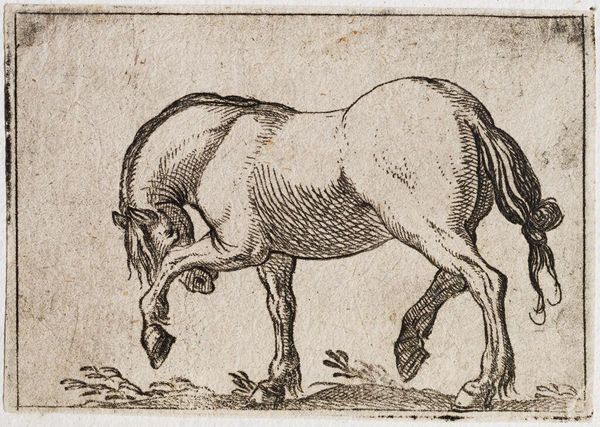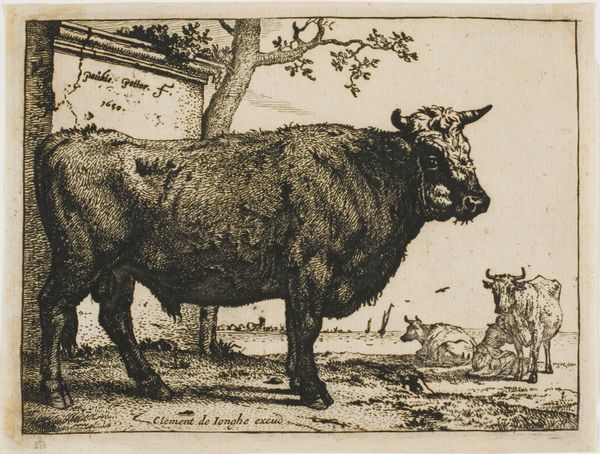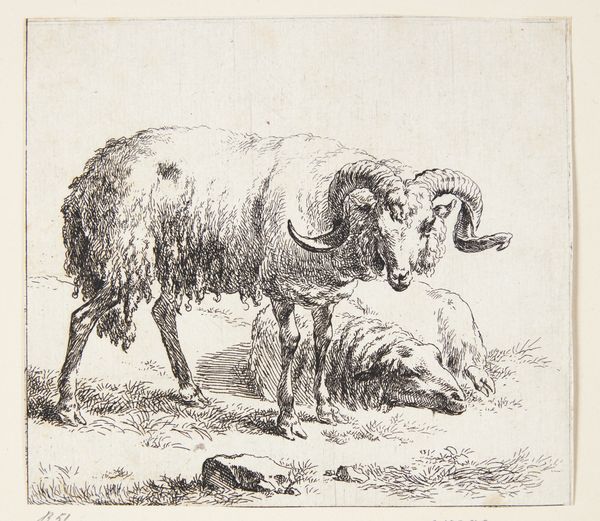
Copyright: CC0 1.0
Curator: The texture almost vibrates off the page, a static charge held in the ram’s wool. Editor: Indeed. What we have here is Antonio Tempesta’s “Standing Ram,” currently residing at the Harvard Art Museums. Tempesta, active in the late 16th and early 17th centuries, was known for his detailed and energetic prints. Curator: The ram, especially the male, carried significant weight in Renaissance symbolism, often linked to ideas of virility, strength, and even sacrifice. How does its representation here reflect or subvert those notions, given the printmaking process? Editor: The etching—the acid biting into the metal plate—suggests a collaboration, almost. It's not just Tempesta's hand, but the agency of the materials themselves that dictates the final form. And this particular ram doesn't strike me as overly virile. Curator: Perhaps the ram’s quiet strength, its very ordinariness, challenges the hyper-masculine ideals imposed upon it. It’s not about brute force, but about a grounded, perhaps more nuanced, understanding of power. Editor: So, its power resides not just in its biological destiny, but in its quiet resistance to it. Intriguing. Curator: It offers a space to reconsider how we project meaning onto animals and, by extension, onto each other. Editor: A space etched out, literally, through labor and material, inviting a deeper look. Thank you.
Comments
No comments
Be the first to comment and join the conversation on the ultimate creative platform.
